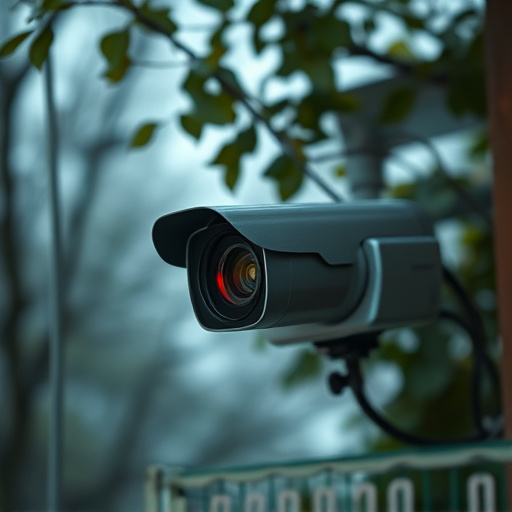Battery-powered spy cameras outdoor have evolved with advanced features but require careful consideration for optimal performance and privacy. Lighting manipulation techniques, from natural to artificial, aid in their disguise. Automated systems using algorithms and image analysis now detect even hidden cameras. A multi-faceted approach including visual inspections, thermal imaging, and light-based tests is essential for prevention and identification. Regular updates on camera technologies are crucial to minimize risks of outdoor surveillance.
Unveiling hidden threats in our outdoor spaces, battery-powered spy cameras pose a subtle yet significant risk. This article delves into the world of these disguised devices, offering a comprehensive guide to their identification. We explore advanced detection techniques, focusing on lighting as a key disguise element. By examining various methods, from scientific insights to practical countermeasures, readers will gain valuable knowledge on preventing and neutralizing the impact of battery-powered spy cameras in outdoor environments.
- Understanding Battery-Powered Spy Cameras
- Outdoor Detection Techniques: A Comprehensive Look
- Lighting as a Disguise: The Science Behind It
- Advanced Camera Identification Methods
- Preventing and Countering Disguised Outdoor Cameras
Understanding Battery-Powered Spy Cameras
Battery-powered spy cameras, often designed for outdoor use, have become increasingly sophisticated tools for surveillance. These compact devices are equipped with advanced features such as night vision capabilities, motion detection, and wireless connectivity, all while operating independently using rechargeable batteries. Their ability to blend seamlessly into their surroundings, whether mounted on trees, poles, or hidden within decorative elements, makes them nearly undetectable.
The outdoor application of these cameras presents unique advantages for security purposes, offering remote monitoring options and evidence capture without drawing attention. The use of renewable energy sources, like solar power, further enhances their discretion. However, it’s crucial to consider factors like weatherproofing, battery life, and privacy concerns when selecting a battery-powered spy camera to ensure optimal performance and ethical use in outdoor settings.
Outdoor Detection Techniques: A Comprehensive Look
Outdoor environments present unique challenges for discreet camera identification due to varying lighting conditions, weather patterns, and potential obstructions. However, advancements in technology have led to innovative detection techniques, especially with battery-powered spy cameras outdoor. One effective method involves analyzing light patterns and anomalies. By studying natural light variations throughout the day and combining it with artificial illumination, security experts can identify irregular lighting situations indicative of hidden camera setups.
For instance, a constant steady light in an area usually occupied by natural sunlight during the day could be a red flag. Similarly, unnatural shadows cast by objects or structures might suggest the presence of a battery-powered spy camera outdoor, as these devices often employ LED lights to capture footage without detection. This comprehensive approach leverages both natural and artificial lighting cues to effectively uncover hidden surveillance equipment.
Lighting as a Disguise: The Science Behind It
Lighting can be a powerful tool in disguising hidden cameras, especially outdoors where natural illumination is abundant. The science behind this technique lies in manipulating light to obscure the camera’s presence. Battery-powered spy cameras designed for outdoor use often exploit the natural environment to blend in seamlessly. For instance, a small, strategically placed LED light can mimic moonlight or the glow of distant streetlights, drawing attention away from the actual camera lens hidden within.
The human eye is incredibly sensitive to contrast and movement, making it easier to detect unusual lights in the darkness. By adjusting the brightness, color temperature, and timing of these lights, one can create an illusion of natural lighting conditions, effectively concealing the presence of a hidden battery-powered spy camera outdoors. This clever use of light as a disguise is just one of many tactics employed by manufacturers to ensure their products remain undetected in various environments.
Advanced Camera Identification Methods
Advanced Camera identification methods, such as those employed for detecting battery-powered spy cameras outdoors, have evolved significantly with technological advancements. Traditional methods often relied on manual inspection and expert knowledge to identify hidden cameras, but modern approaches leverage sophisticated algorithms and image analysis techniques. These innovations enable automated detection of even tiny, concealed cameras, enhancing privacy protection in public spaces, homes, and workplaces.
The integration of advanced sensors, lighting patterns, and pattern recognition algorithms plays a crucial role in these identification processes. For instance, specialized equipment can analyze light reflections, shadows, and distortions to uncover the presence of hidden lenses. Additionally, outdoor environments present unique challenges, requiring robust solutions capable of functioning in various weather conditions and lighting scenarios, further underscoring the importance of advanced camera identification methods for battery-powered spy cameras.
Preventing and Countering Disguised Outdoor Cameras
Preventing and identifying hidden, battery-powered spy cameras outdoors is an increasingly important concern for privacy advocates and security professionals alike. These tiny yet powerful devices can be easily concealed in plain sight, capturing footage undetected. To combat this growing issue, a multi-faceted approach is necessary. One effective strategy involves regular visual inspections of potential hiding spots, such as trees, bushes, and outdoor decorations, looking for any signs of unusual wiring or components. Advanced thermal imaging technology can also aid in detection by revealing heat signatures that might indicate the presence of hidden cameras.
Additionally, utilizing light-based tests is a clever method to counter disguised outdoor cameras. Specific patterns of lighting, when cast upon surfaces, can help identify reflective surfaces commonly used in spy cameras. This simple yet effective technique can be easily incorporated into routine security checks. By combining these proactive measures with staying informed about the latest camera technology and trends, individuals and organizations can significantly reduce the risk of becoming victims to hidden surveillance devices.
Disguised camera identification using lights is a complex yet evolving field. As technology advances, so do the tactics of battery-powered spy cameras in outdoor settings. Understanding the science behind lighting as a disguise and employing advanced camera identification methods are crucial steps in navigating this modern challenge. By combining comprehensive outdoor detection techniques with proactive prevention strategies, we can foster a safer environment, ensuring that our privacy remains intact in today’s digital age.
